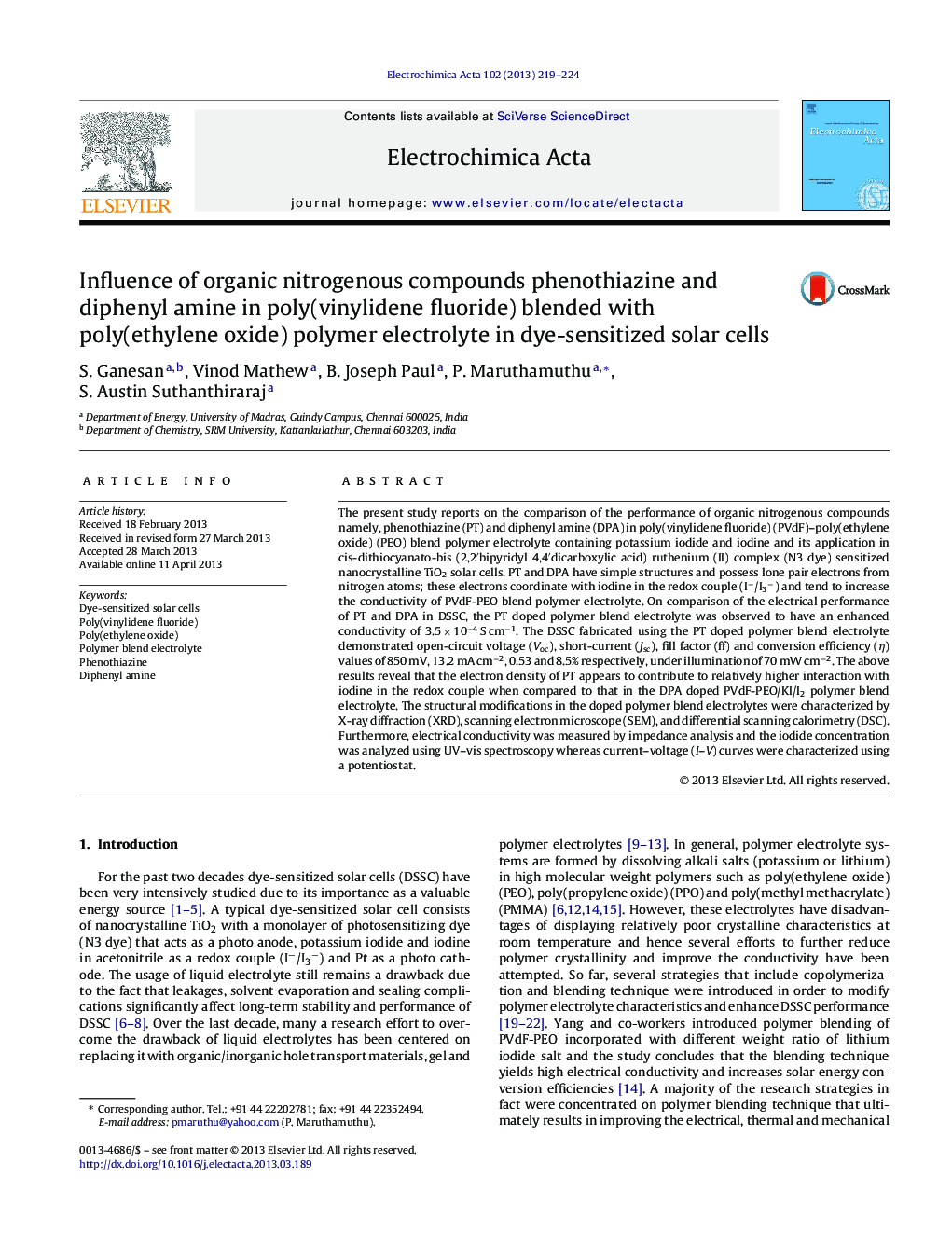| Article ID | Journal | Published Year | Pages | File Type |
|---|---|---|---|---|
| 187276 | Electrochimica Acta | 2013 | 6 Pages |
•Phenothiazine and diphenyl amine were incorporated in polymer blend electrolyte is cost-effective method.•For first time, phenothiazine and diphenyl amine in PVdF-PEO based polymer electrolyte.•The PVdF-PEO/KI/I2/phenothiazine shows enhanced conductivity of 3.5 × 10−4 S cm−1.•Phenothiazine doped polymer blend electrolyte shows high efficiency of 8.5%.•This is higher efficiency than present day DSSCs with poly(vinylidine fluoride) polymer electrolyte.
The present study reports on the comparison of the performance of organic nitrogenous compounds namely, phenothiazine (PT) and diphenyl amine (DPA) in poly(vinylidene fluoride) (PVdF)–poly(ethylene oxide) (PEO) blend polymer electrolyte containing potassium iodide and iodine and its application in cis-dithiocyanato-bis (2,2′bipyridyl 4,4′dicarboxylic acid) ruthenium (II) complex (N3 dye) sensitized nanocrystalline TiO2 solar cells. PT and DPA have simple structures and possess lone pair electrons from nitrogen atoms; these electrons coordinate with iodine in the redox couple (I−/I3−) and tend to increase the conductivity of PVdF-PEO blend polymer electrolyte. On comparison of the electrical performance of PT and DPA in DSSC, the PT doped polymer blend electrolyte was observed to have an enhanced conductivity of 3.5 × 10−4 S cm−1. The DSSC fabricated using the PT doped polymer blend electrolyte demonstrated open-circuit voltage (Voc), short-current (Jsc), fill factor (ff) and conversion efficiency (η) values of 850 mV, 13.2 mA cm−2, 0.53 and 8.5% respectively, under illumination of 70 mW cm−2. The above results reveal that the electron density of PT appears to contribute to relatively higher interaction with iodine in the redox couple when compared to that in the DPA doped PVdF-PEO/KI/I2 polymer blend electrolyte. The structural modifications in the doped polymer blend electrolytes were characterized by X-ray diffraction (XRD), scanning electron microscope (SEM), and differential scanning calorimetry (DSC). Furthermore, electrical conductivity was measured by impedance analysis and the iodide concentration was analyzed using UV–vis spectroscopy whereas current–voltage (I–V) curves were characterized using a potentiostat.
